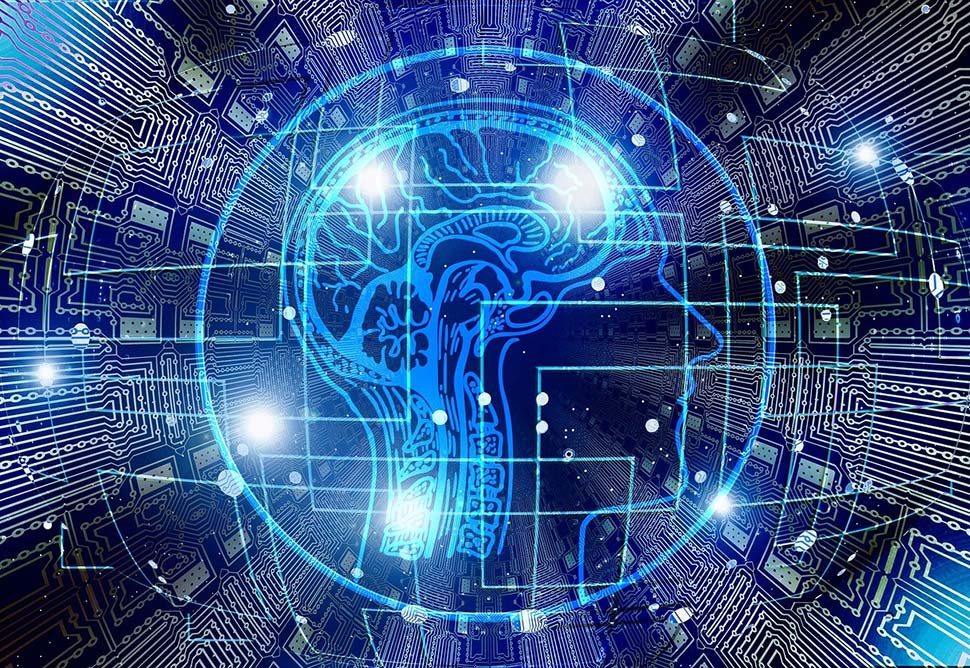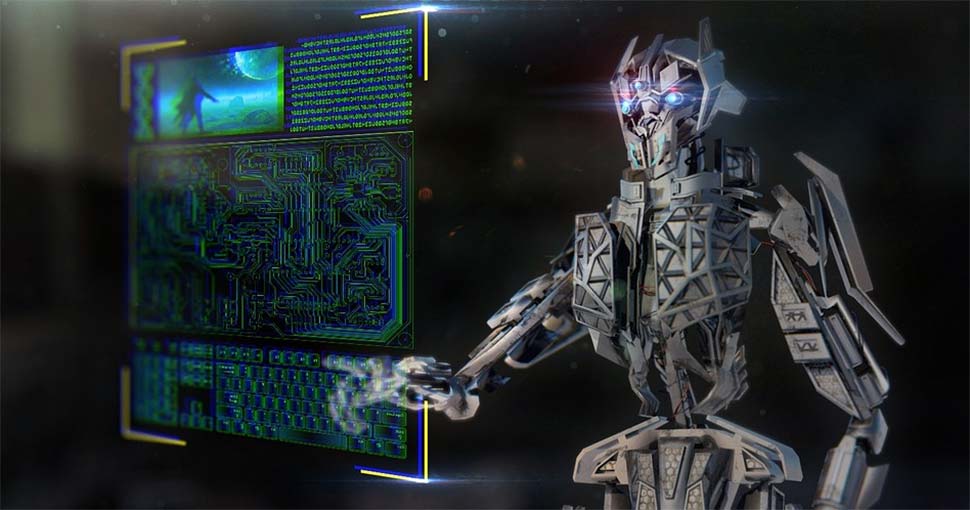Barely does a day go by when artificial intelligence, or AI, does not appear in the news in some form. Whether this is a report about how ChatGPT can be used to write a news story about itself, or even how software has been used to make it seem that long-deceased singers are covering modern-day hits, there is no doubt over the level of excitement in this area.
While we may not quite be at the point of The Terminator and stories of killer robots heading off in pursuit of Sarah Connor, it has to be said that AI is now playing a much bigger role in industries of all kinds.
This is certainly the case in print, where AI has been rolled out in some form during recent years to help automate parts of the printing process and make life easier for print companies. Robots are already being used to carry out traditionally mundane tasks such as stacking finished work – and at a much faster rate than if it were to be done by human hands.
Yes, this obviously places certain jobs and roles under threat, but this is also part and parcel of the ever-evolving world that we live in. At one time, all print jobs needed to be managed with paper, a pen and a calculator in an office; nowadays, we are blessed with software and tools such as management information systems, which have significantly helped print companies stay on top of things.
But what about the wider impact on the industry? Will skilled workers in print be a thing of the past should AI and the robots reach a point where they can oversee the entire printing process? And what about those working behind the scenes; will we still need accounting staff or even salespeople when AI can be programmed to do what they currently do?
Some workers will be at risk
The short answer is yes; skilled workers will very much remain part of the print room and indeed behind the scenes in the office. Simply put, while we can certainly rely on robots to carry out the more mundane tasks, nothing replaces interactions with humans. We all remember the dark days of the pandemic and not being able to meet up with each other; the need for human interaction was abundantly clear.
The deep learning-based AI tools that are now being introduced in a range of markets will no doubt have an impact on the entire labour market, and yes, some jobs will likely fall by the wayside in the process, while others will be restructured to fit in with new, AI-heavy setups.
At the same time, these job losses will be partially offset by job gains for machine learning specialists and emerging jobs like prompt engineers. But, once companies learn how to exploit generative AI, we can anticipate rapid restructuring at many companies that involve cuts in white-collar staff.
If we must single out those who may be at greater risk than others, then it is likely to be workers whose job security was founded on their knowledge of complex processes and ability to integrate information from various sources quickly to make decisions. Plucking a few print-focused roles out of thin air, this could include press operators, print finishers and even print estimators. AI could indeed be programmed to take on these roles.
This said, the print industry is no stranger to change and how this impacts the market. We only need to look at digital print and what that did to the print room. Yes, some jobs were lost along the way, and in an ideal world nobody wants to see that happen, but all sorts of new opportunities were created for new roles in the workplace, helping evolve the industry in the process.
The human touch
While mentions of job losses and staff cuts are never a pleasant thing to read or write about – unless perhaps your football team has finally got shot of that manager who should have gone months ago – the fact of the matter is that we are way off mass job losses. The reality of the situation is that we have only just scratched the surface of AI and much of this technology is still in development.
AI and robotics still need plenty of work to ensure it can reach a point where it can out-do skilled workers, both in print and other markets, that have been carrying out their trade for many years. So, it is pretty safe to say any doomsday scenario in which AI replaces everyone’s jobs will not be playing out anytime soon.
As new technologies penetrate markets, they often change how organisations compete. At the same time, the advent of new technologies can make certain jobs and skillsets more important. Here, we can use several examples applicable to print; one of which is creatives, who will not need to be their own muse for new idea generation and can rely on AI to support their work and thus help boost creativity.
Then there is the issue of mistakes. While we all know humans are very much prone to making errors as, after all, we are only human, both computers and AI are also not perfect. Just writing this article, Microsoft Word has tried to correct me on several occasions when in fact I had it right in the first place – though admittedly it was right more than a few times!
AI models do make mistakes, whether in logic, efficiency, or inference. So, the skills to test, edit, and innovate or otherwise improve on AI outputs are likely to become more valuable – and guess whose job that will be? That’s right, Joe Human.

Working together with AI
Keeping on the theme of humans and robots living in harmony – think the film I-Robot before it all went a bit crazy towards the end and Will Smith had to save the day – there is plenty of evidence to suggest AI will in fact be a very positive thing for the print industry.
In the near future, AI will be better used as a supplementary tool to help experts perform their work, rather than cause a threat to their employment. Yes, some tasks can be completed correctly and completely by AI, but for those types of tasks we will see something like the Industrial Revolution, where people’s jobs changed, and they handed all manner of new tools to become more productive and focus on other tasks instead.
At the same time, for other tasks, AI will provide useful outputs, but will still need human skills to optimise output and complete tasks to a high standard. Take ChatGPT for example; it was never meant to reveal the truth or to display correct knowledge (and this writer for one is thankful for this), but instead used to generate content that displays the words that are most likely to come next. We cannot expect the outcome to necessarily be true statements.
One parallel that can be drawn with the print industry is, again, management information software. This was never developed to replace hard-working office staff who ensure the business is running as it should, but instead to serve as a supplementary tool to help make their lives easier and allow them to produce accurate results and data much faster and in an easier-to-digest format.
Supporting a positive future
At the risk of going off on a slight tangent, the advent of the calculator did not make maths less important, but it did change what mathematical skills became important to organisations and, importantly, how we taught maths in school. Engineers working at NASA began to use calculators to solve complex maths problems, instead of having to solve them in their heads, The ability to structure a problem or goal as a set of mathematical equations the calculator could solve became more important. While calculators became invaluable for rocket science, they did not remove the need for maths, engineering, or deep problem-solving by humans.
AI should be seen as something that serves to augment or improve human performance, rather than replace the humans it is trying to help. To draw yet another example, AI has fundamentally shifted the nature of trading in the financial world. Over in the US and the frantic world that is Wall Street.
AI determines credit scores for existing and potential customers, screens applicants, assists in hiring, responds in real time to queries, and suggests new courses of action. But the brokers very much remain, shouting down the phones at their clients like they have done for many years.
It would be unwise to ignore AI and the impact it will have on print. The fact of the matter is that you are not going to be able to escape it and rather than fight against it or put it out of your mind, you should look to embrace it as much as you can. While it might be small steps to start off with, getting familiar with AI and implementing early technology can give you a significant advantage moving forward in what is a highly competitive print market.
AI tools can create tremendous value for businesses, but it is humans who must decide how best to adapt in order to harness the potential of these new technologies while minimising their negative consequences. Ultimately, individuals and organisations should focus on upskilling and scaling to make the most of new technologies.
It will not so much be a case of “I’ll be back” for skilled print workers, but more so “I’m still here and I’m not going anywhere, but maybe we can be friends”. Not quite as catchy as Arnie, am I?
By Rob Fletcher





